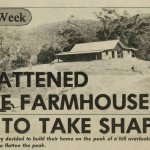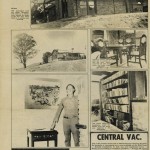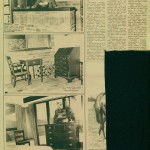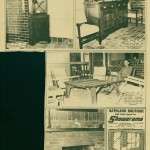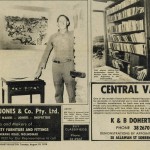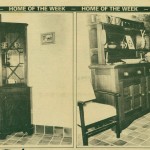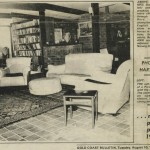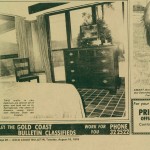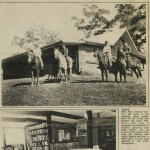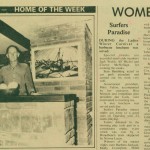Australian GOLD COAST BULLETIN, Tuesday, August 10, 1976
My Grandparents, Archie and Ursula Bury
(Featured Home of the Week)
“THE PEAK WAS FLATTENED AND THE FARMHO– USE BEGAN TO TAKE SHAPE”
— BY ANNE KNIGHT
“WHEN Mr. and Mrs. Archie Bury decided to build their home on the peak of a hill overlooking their 166-acre property at Mudgeeraba, the first step was to flatten the peak.
Mr Bury, an English solicitor turned farmer, did the job himself, pushing out the land with a chisel plough and grader and banking it behind 16 ironbark trees cut from the property.
He and Mrs Bury collaborated with Gold Coast designer-builder Lee Mohun on the plan of the house.
It matches, in part, the original old brick farmhouse on a lower peak that is now used as a harness room for Mrs Bury’s horses.
The new farmhouse already has a feeling of a solid, old one and is a charming combination of old bricks, seasoned timbers, snug fireplaces, paintings, books and fine furniture.
Although the kitchen has all mod cons, it has the cosy, hospitable feeling of a farmhouse with timber cupboards and tiled benchtops.
All the floors throughout the house are of quarry tiles.
There are no curtains, except in the bedrooms, to mar the spectacular views of Springbrook and surrounding ranges.
The actual area at Mudgeeraba is known as Neranwood and the property is bounded by Mudgeeraba Creek.
Mr Bury put the last ¼ mile of the road through, with a tractor after a bulldozer had done the main cutting.
He was also the builder’s labourer while the house was being built and cleaned all the second hand bricks which were used for patios and part of the house.
The bricks used in the central fireplace were rescued from a house being demolished in the Hunter Valley.
They still have the convicts’ marks on them – hearts, trowels and circles – and to form a decorative pattern.
The bricks used on the patio are Virginia bricks, from an old building at Ipswitch, and are simply laid on a bed of sand. Others came from the Brisbane Gas Works.
Much of the timber is also from old buildings and has been treated with linseed oil.
After the half-hour drive from Southport, the first impression is that the silence is deafening.
The only sound is from the whip birds and kurrawongs. Wallabies and kangaroos are plentiful in the surrounding bush. So are sweet-scented climbing orchids.
Mr and Mrs Bury lived at Main Beach before their house was built.
Mrs Bury, who was a champion rider in England, has a riding school at the Mudgeeraba farm, for housewives during the week and for children at weekends.
There are four grownup children in the family. Dr Peter Bury is senior lecturer and head of the physics department at the Pharmacy College in Melbourne and is married, with two children.
Fiona, who won a Nuffield scholarship, is married to William Fuhri. They live in Liberty [Missouri] and have two children.
Tom is at Queensland University doing electrical engineering and Jenny is at Teachers College at Mt Gravatt.
The heat of the fire, lit each evening, warms the house all day.
All the beautiful English furniture Mr and Mrs Bury brought with them when they came to Australia was lost in a fire at another farm.
Mrs Bury has collected the pieces for their present home from antique shops in Australia.
They include an oak dining table which extends, matching chairs with brown and white suede velvet upholstery, a French bureau, a Florentine card table inlaid in a flower design and a rosewood settee.
Paintings include two by Patrick Kilvington, on pen and wash by Mr and Mrs Bury’s son-in-law, William Fuhri, and a forest and fauna of North Queensland by Heinz Steinmann.
In the main bedroom, one wall is almost all windows and looks directly on to Springbrook. Interesting furniture includes an antique English repeater clock, rescued from the fire and restored, an inlaid mahogany dressing mirror and two English chairs.
There is a dressing room and on suite bathroom tiled in ivory and green, with a quarry tiled floor.
The guest bedrooms have their own bathroom and also a door to the patios.
There are three patios to make the most of the prevailing weather and to take in each a different view.”
